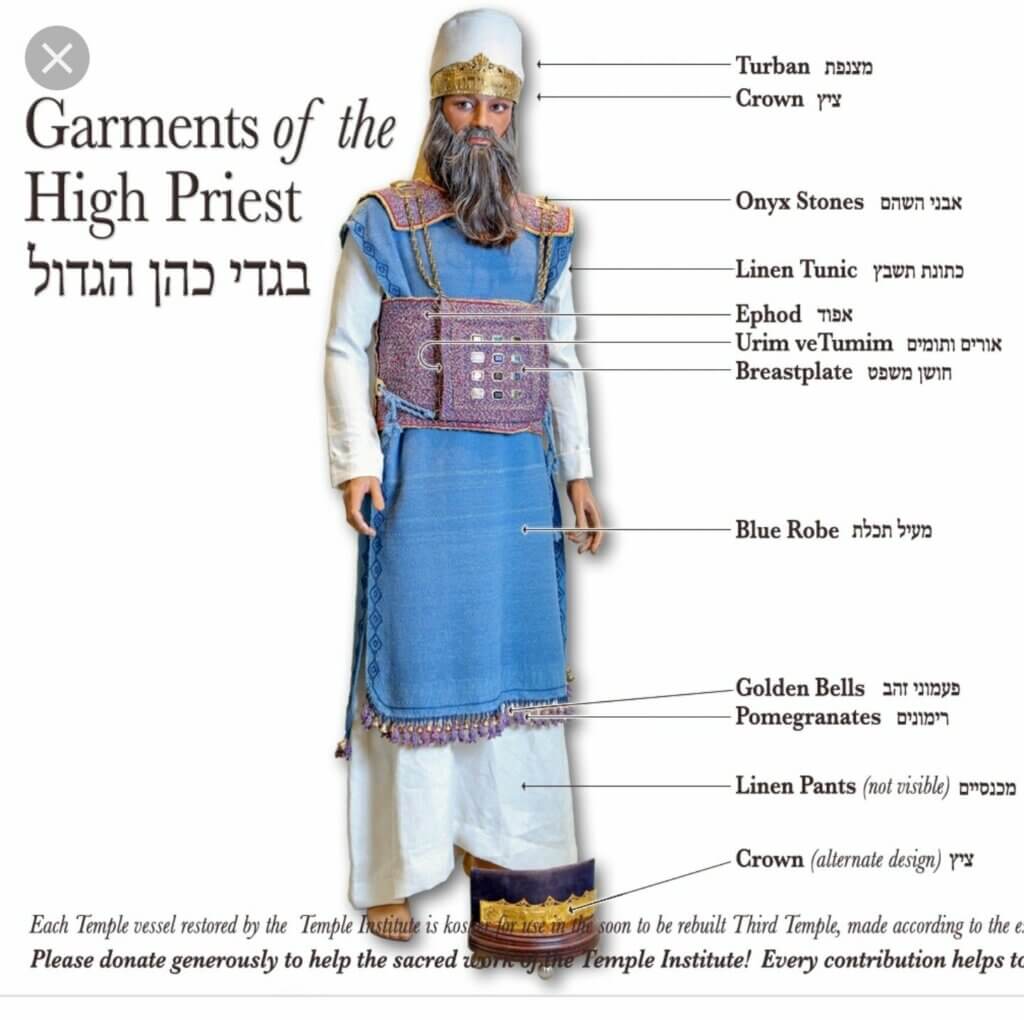In contemporary Christian practice, it’s common to overlook aspects of the scripture that are less observed or practiced today – such as the vestments and objects donned by Jewish priests in the Old Testament. However, these God-designed items hold considerable significance. The relevance of the ephod’s image, in particular, might astonish you today.
So what is an ephod in the Bible?
An ephod was a garment usually made of linen that covered the priest from the shoulder to the hip. The high priest wore a skillfully crafted ephod consisting of gold shoulder pieces bearing carved onyx stones showing the names of the 12 tribes, and a woven band of colorful threads. The ephod supported the breastpiece of 12 precious stones.
Let’s take a closer look.
What is an Ephod?
The holy garments that the priests wore while performing their duties set them apart from the rest of the Israelites. The high priest, in particular, wore skillfully crafted, expensive and beautiful items to indicate that he had been consecrated by God to come before Him on behalf of the nation. These included:
- A breastpiece
- An ephod
- A robe
- A coat of checker work
- A turban
- A sash
According to scripture (Exodus 28:6-12), the high priest’s ephod consisted of two gold shoulder pieces and an intricately woven band of gold, scarlet, blue, and purple yarn connecting them. There was also a finely woven linen element to the piece.

On each shoulder piece, six of Jacob’s sons’ names were engraved on an onyx stone (these were the 12 men who founded the 12 tribes of Israel). These names were to be a reminder to the nation and The LORD of the history of Israel, and so were called the stones of remembrance.
Some believe the ephod looked like an apron that covered the body from shoulder to hip, others that it was like a chestless jacket for the breastpiece to fit into. We can’t be sure, but we do know that it was a significant part of the priest’s garments and it was worn out of obedience to God while they made intercession and heard from God.
Let’s find out more about the significance of the ephod.
Mentions of Ephods in The Bible
The ephod iss mentioned only in the Old Testament. The first significant passage is in Exodus where God is providing Moses with the design of the ephod that Aaron, the high priest, would wear.
And you shall make holy garments for Aaron your brother, for glory and for beauty. You shall speak to all the skillful, whom I have filled with a spirit of skill, that they make Aaron’s garments to consecrate him for my priesthood.
Exodus 28:2-3 (ESV)
The breastpiece that was attached to the ephod also held huge significance and contained two stones, the Urim and Thummim. These were integral elements in the communion between God and the high priest, like our union with Christ today, who represented the entire nation before God. God graciously communicated through these stones, leading His people.
And they shall bind the breastpiece by its rings to the rings of the ephod with a lace of blue, so that it may lie on the skillfully woven band of the ephod, so that the breastpiece shall not come loose from the ephod. So Aaron shall bear the names of the sons of Israel in the breastpiece of judgment on his heart, when he goes into the Holy Place, to bring them to regular remembrance before the Lord. And in the breastpiece of judgment you shall put the Urim and the Thummim, and they shall be on Aaron’s heart, when he goes in before the Lord. Thus Aaron shall bear the judgment of the people of Israel on his heart before the Lord regularly.
Exodus 28:28-30 (ESV)
The ephod was not always used to honor God. There were instances in scripture when the people took their eyes off God and chose to worship an ephod in His place, forgetting that the power belonged to God, not the ephod.
And Gideon made an ephod of it and put it in his city, in Ophrah. And all Israel whored after it there, and it became a snare to Gideon and to his family.
Judges 8:27 (ESV)
Later on in 1 Samuel 23 and 30, we see David call for the ephod in order to communicate with God at a time when Saul was plotting against him. It is clear that the ephod (and the associated breastpiece with the Urim and Thummim stones) was a way that God was able to direct His people (this is some time after he fights Goliath as a boy).
David knew that Saul was plotting harm against him. And he said to Abiathar the priest, “Bring the ephod here.” Then David said, “O Lord, the God of Israel, your servant has surely heard that Saul seeks to come to Keilah, to destroy the city on my account. Will the men of Keilah surrender me into his hand? Will Saul come down, as your servant has heard? O Lord, the God of Israel, please tell your servant.” And the Lord said, “He will come down.”
1 Samuel 23: 9-11 (ESV)
In 1 Chronicles 15 (27-28), though not a priest, King David is seen wearing a linen ephod (not the high priest’s ephod) as the ark of the covenant is returned to Jerusalem. This isn’t mentioned negatively, but as an act of worship. In this situation, it is clear that God alone was being worshiped following the victory.
The Ephod is a Reminder of Sinful Man’s Separation from a Holy God
The high priest’s ephod of the Old Testament is not a part of the modern church or Christian worship experience but it is a part of scripture and so it is still relevant today.
Consider the following key truths and reminders of God’s grace.
- God is holy and sin separated God from His people but they could still come before Him through a priest following sacrifices and cleansing. God made a way.
- The nation of Israel did not have the fully revealed Word of God but God directed His people, and one of the ways He did that was through the Urim and Thummim stones. God made a way.
- Despite their periods of faithlessness, God remained faithful. He reminded His people of His faithfulness with beautiful depictions of the names of the 12 sons of Jacob on the onyx stones on the ephod (and breastpiece). God made a way.
As Christians, we can look at the image of the ephod and praise God that through the death of His Son, Jesus – our Great High Priest, we can have direct access to God. We have His revealed and complete Word – The Bible. He remains faithful, He is the God who saves.
He is the God who makes a way.





